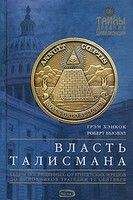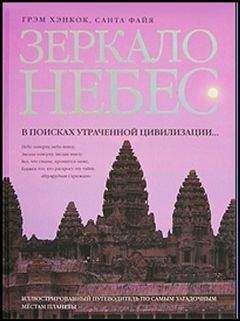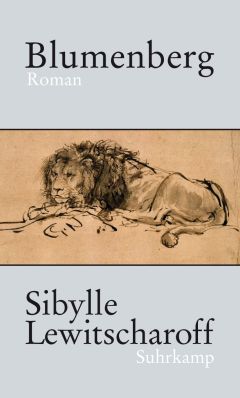46. Charles Sumner Lobingier, Ancient and Accepted Scottish Rite, Kessinger Publishing Co., Kila, Montana, USA, 1931, p. 24.
47. David Ovason, The Secret Zodiacs of Washington DC, Century Books, London, 1999, pp. 116–117.
48. Биссел вычислил существование близкого спутника Сириуса, наблюдая за волнообразным движением звезды. Олвин Кларк впервые наблюдал в телескоп звезду-спутницу, известную как Сириус В, в 1862 году, а Линдеблад сфотографировал ее в 1970 году.
49– Ovason, op. cit, p. 117.
50. Baltrusaitis, op. cit, p. 31.
51. Dossiers de Ihistoire mysterieuse, no. 7, p. 106.
52. Nigel Aston, Religion and Revolution in France, MacMillan Press, London, 2000, p. 272.
53. Kerisel, op. cit, p. 160.
54. Robert Bauval, Secret Chamber; Arrow, London, 2000, p. 507, n. 27.
55. Sylvie Legaret and Philippe Coutines, Paris Story, Editions Denoel, Paris, 1977, p. 83, plate 3.
56. Ibid.
57. Aston, op. cit, p. 271.
58. Ibid.
59. Ovason, op. cit, p. 87.
60. Short, op. cit, pp. 121–122.
61. Ibid, p. 122
1. Aubrey Burl, Gods Heretics: The Albigensian Crusade, Sutton Publishing, Stroud, 2002, p. 9. Еще в 1198 году Оланд Лилль, участвовавший в оголтелой антикатарской пропаганде того времени, выводил происхождение слова «катар» от «кошачья задница» (cat'sarse), утверждая, что дьявол является к еретикам в виде кота, которого они целуют в зад. Сходные обвинения выдвигались против тамплиеров (см. главу 15).
2. Евангелие от Иоанна, 1,14.
3. F. L. Cross and Е. A. Livingstone (eds.), The Oxford Dictionary of the Christian Church, Oxford University Press, Oxford, 1988, p. 1198.
4. St Augustine, City of God, Penguin, London, 1984, p. 1.
5. Chas S. Clifton (ed.), Encyclopaedia of Heresies and Heretics, ABC–Clio Inc., Santa Barbara, 1992, p. 49.
6. See Chapters 4, 5 and 6 below.
7. Malcolm Lambert, The Cathars, Blackwell, Oxford, 1998, p. 4.
8. See Jonathan Sumption, The Albigensian Crusade, Faber and Faber, London, 1999, pp. 28–30. See also Arthur Guirdham, The Great Heresy: the History and Beliefs of the Cathars, C. W. Daniel Company Ltd., Saffron Walden, 1993, p. 23.
9. Joseph R. Strayer, The Albigensian Crusades, The University of Michigan Press, Ann Arbor, 1995, p. 1.
10. Ibid., p. 3.
11. Gervase of Tilbury, cited in Sumption, op. cit., p. 18.
12. Sumption, op. cit., p. 18.
13. Zoe Oldenbourg, Massacre at Montsegur, Weidenfeld and Nicolson, London, 1997, p. 1.
14. Guirdham, op. cit., p. 15.
15. Lambert, op. cit., p. 62.
16. Guirdham, op. cit., p. 15; Lambert, op. cit., p. 62.
17. Oldenbourg, op. cit., p. 11.
18. Cited in Malcolm Barber,The Cathars: Dualist Heretics in Languedoc in the High Middle Ages, Longman, London, 2000, p. 51.
19. Lambert, op. cit., p. 62.
20. Guirdham, op. cit., p. 15.
21. Ibid., p. 15.
22. Cited in Burl, op. cit., p. 21.
23. Barber, op. cit., pp. 65–66.
24. Ibid., p. 66.
25. Ibid., p. 25.
26. Malcolm Lambert,Medieval Heresy: Popular Movements from the Gregorian Reform to the Reformation, Blackwell, Oxford, 1992, p. 57.
27. Cited in Lambert, The Cathars, p. 39.
28. Cited in ibid., pp. 39–40.
29. Steven Runciman, The Medieval Manichee: A Study of Christian Dualist Heresy, Cambridge University Press, Cambridge, 1999, p. 121; Sumption, op. cit, p. 39.
30. Ibid
31. Stephen O'Shea, The Perfect Heresy: The Life and Death of the Cathars, Profile Books, London, 2001, p. 20.
32. For example, see Lambert, The Cathars, p. 155.
33. For example, see Oldenbourg, op. cit, p. 49; Runciman, op. cit, p. 160.
34. Oldenbourg, op. cit, pp. 21–22.
35. Cited in Lambert, The Cathars, pp. 142–143.
36. Lambert, Medieval Heresy, p. 121.
37. Lambert, The Cathars, p. 75.
38. Ibid, pp. 23 and 153; see also O'Shea, op. cit, p. 24.
39. Lambert, The Cathars, p. 75.
40. Runciman, op. cit, p. 160.
41. Ibid, p. 151.
42. Ibid, p. 160.
43. Lambert, Medieval Heresy, p. 120; Rion Klawinski, Chasing the Heretics: A Modern Journey through Medieval Languedoc, Ruminator Books, Saint Paul, Minnesota, 2000, p. 68; Runciman, op. cit, pp. 159–160.
44. Lambert, Medieval Heresy, p. 124, citing Guiraud. See also Sumption, op. cit, p. 50.
45. Свидетельство женщины из Пулорена перед судом инквизиции, цитируется по Sumption, op. cit, p. 52.
46. Lambert, Medieval Heresy, p. 109.
47. Runciman, op. cit, p. 158.
48. Ibid.
49. Lambert, Medieval Heresy, p. 108.
50. Lambert, The Cathars, pp. 240 and 242.
51. Ibid, p. 242.
52. Cited in ibid, p. 139.
53. Strayer, op. cit, p. 247.
54. Lambert, The Cathars, p. 139.
55. Guirdham, op. cit, p. 24.
56. Lambert, The Cathars, p. 160.
57. Guirdham, op. cit., p. 23.
58. Ibid.
59. O'Shea, op. cit, p. 8.
60. Guirdham, op. cit, p. 95.
61. Oldenbourg, op. cit, pp. 283–284, and Lambert, The Cathars, p. 125.
62. Guirdham, op. cit, p. 95.
63. See Barber, op. cit, pp. 203–225.
64. Мартин Барбер отвергает аргумент Вейль, который он рассматривает как следствие ее «беспечного отношения к свидетельствам» и «фундаментально антиисторического» подхода.
65. Cited in ibid, p. 206.
66. Oldenbourg, op. cit, p. 23.
67. Ibid, p. 24.
68. Ibid.
69. Burl, op. cit, p. 19.
70. See Sumption, op. cit, p. 90; O'Shea, op. cit, p. 20.
71. Geoffrey Wigoder (ed.), The Encyclopaedia of Judaism, The Jerusalem Publishing House, 1989, p. 514.
72. Сообщение Вениамина из Туделы, cited in Sumption, op. cit, p. 90.
73. Cited in Sumption, op. cit, p. 90.
74. Encyclopaedia Britannica, 15th edn, London, 1991, Micro — paedia, 11:946–947.
75. Ibid, 3: 686–687.
76. Ibid, 11: 946–7; 3: 686–687.
77. Sumption, op. cit, pp. 29–30.
78. Oldenbourg, op. cit, p. 26.
79. Ibid, p. 230–231.
80. Sumption, op. cit, p. 30; Lambert, Medieval Heresy, p. 83.
81. Guirdham, op. cit, p. 96.
82. Lambert, The Cathars, p. 149.
83. Oldenbourg, op. cit, p. 61.
84. O'Shea, op. cit, p. 41.
85. Oldenbourg, op. cit, p. 61.
86. Guirdham, op. cit, p. 16.
87. Barber, op. cit, p. 216.
88. Oldenbourg, op. cit, p. 51.
89. Ibid, p. 51.
90. Ibid, p. 69.
91. Ibid, p. 70.
92. Lambert, The Cathars, p. 160.
93. Строго говоря, альбигойские крестовые походы прекратились в 1229 году после заключения Парижского мирного договора. Однако вторжения крестоносцев в Лангедок продолжались еще 15 лет и достигли кульминации во время осады катарской цитадели Монсегюр в 1244 году. Более подробно об этом см. в главе 7.
94. Oldenbourg, op. cit, p. 56.





